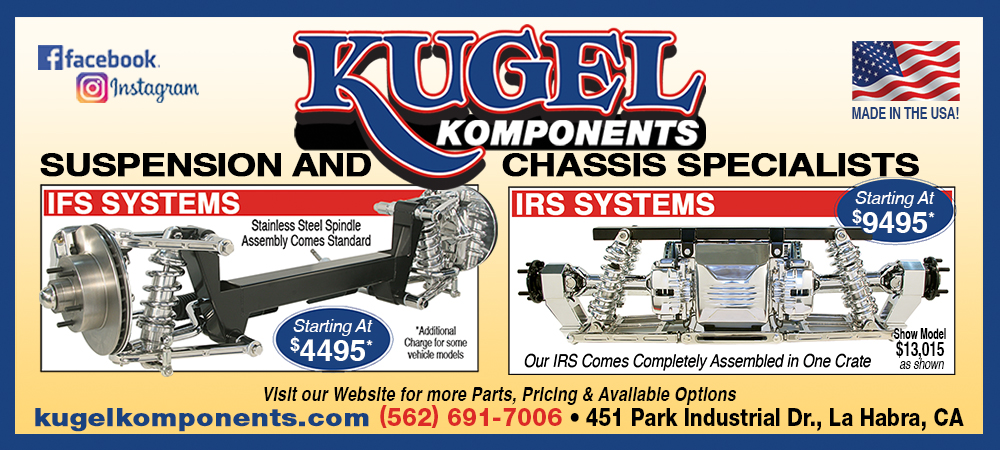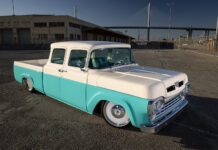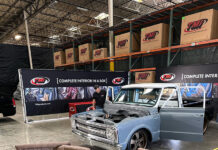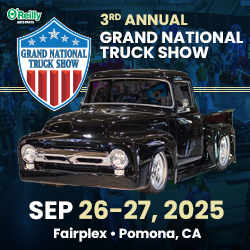By Rob Fortier – Images by Taylor Kempkes
When I started messing around with cars/trucks/bikes back in my formative years, the only things that mattered one bit to me about fuel systems were one, was it leaking too much; two, was the plastic filter clogged; and/or three, did I have enough gas to make it to the beach before sundown for a quick surf session? Typically, if it wasn’t running properly or I was running on fumes, I simply borrowed Mom’s Honda!

Read More: Old Anvil Speed Shop’s Streamlined Solution for Replacing the ’48 Chevy’s Ugly Exhaust!
As the years progressed, I was forced to self-educate—from initially learning the proper procedure of freeing a stuck float with a hammer and slowly graduating to learning how to set the float in the first place, I became a vintage carburetion pro in my own mind. Fortunately, I was able to rely on others when it came to dealing with more advanced modern fuel systems … but still to this day, I prefer messing around with carbs (in my vehicles AND in my gut!).

So, when I acquired my ’48 Chevy, one of the first things I was asked if I was going to replace was the unique Edelbrock tunnel ram and 600-cfm four-barrel. My response was simple: Why? It runs and well, to be quite honest, so I’ll probably stick to the old mantra, “If it ain’t broke …” However, the same could not be said for the actual fuel delivery portion.

At first, I couldn’t figure out which was louder, the dual air compressors mounted to each side of the custom-fabbed aluminum fuel tank or the old-style fuel pump mounted to the framerail right beneath the cab. Turns out they were both equally as noisy, and seeing as Old Anvil Speed Shop will be replacing the entire ride control setup with Air Lift’s 3H/3P and FLO Air tank systems, that meant the fuel pump, which was actually plumbed in with the corresponding filter incorrectly, would be performing solo … until Paul, once again, had other things to say about that!

As was the case with the exhaust system, Paul was not about to facilitate Old Anvil’s brand-new All Access bed floor kit just to see—and hear—an old, outdated external fuel pump with its huge, antiquated filter nestled in with all the new components. “We’ve used Aeromotive on almost all of our builds,” he says. “They’re simple, universal to install in many applications, have never let us down … and … they’re super quiet!”

Read More: Our Chevy Pickup Gets a New Firewall, Engine & Transmission
Ultimately, we selected Aeromotive’s Carb Returnless Phantom 325 (PN 18201) combined with their SS-Series ORB-6 Carb Regulator (PN 13201) and AN-06 10-Micron filter kit (PN 12347), all of which Old Anvil plumbed in using black-braided stainless hose and Phenix black-anodized AN fittings. This system, ultimately, can’t be beat when it comes to efficiently delivering fuel to a so-called “antiquated carburetor” induction.

Fortunately, the existing aluminum fuel tank can remain in the system lineup—the new Stealth 325 15-psi (internally regulated) pump simply retrofits in and pressure reduced by the new regulator is mounted off the firewall, close to the carburetor; the serviceable filter is mounted inline off the framerail, in the vicinity of the prior components we’re replacing. Like Paul said, a very simple yet fully modern system that even I can understand … and work with! In the event I ever decide to do the throttle-body EFI conversion, I’m that much further ahead of the game fuel delivery–wise!


















Sources:
Aeromotive
(913) 808-2376
aeromotive.com
Old Anvil Speed Shop
(657) 223-9889
oldanvilspeedshop.com
Click on this issue’s cover to see the enhanced digital version of How to Optimize Your Return(less) Investment With an In-Tank Aeromotive Fuel System.





























